Standards of Service
-
BS-EN12453
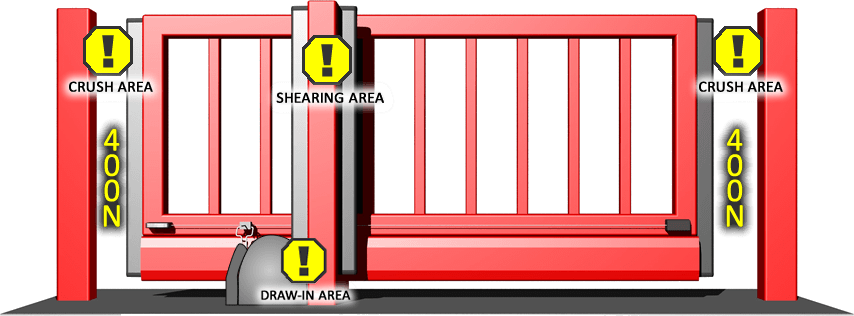
Defines areas of crushing, shearing & draw in on gates.
Stipulates a maximum of 400N of crushing force allowed before gate must start to reverse in these areas (see diagrams). Areas outside of this are allowed up to 1400N.
States the force exerted on contact must begin to reduce within 0.75 of a second to below 150N.
Requirement to reduce force & back off applies to both opening & closing operations of the gate system.
Defines that a danger area is considered to exist when a gap between the gate and a stationary object reduces to 500mm or below.
Lists accepted technologies for providing this protection as torque limitation in drive units, laser light curtain devices & PSPE equipment.
-
EN12445
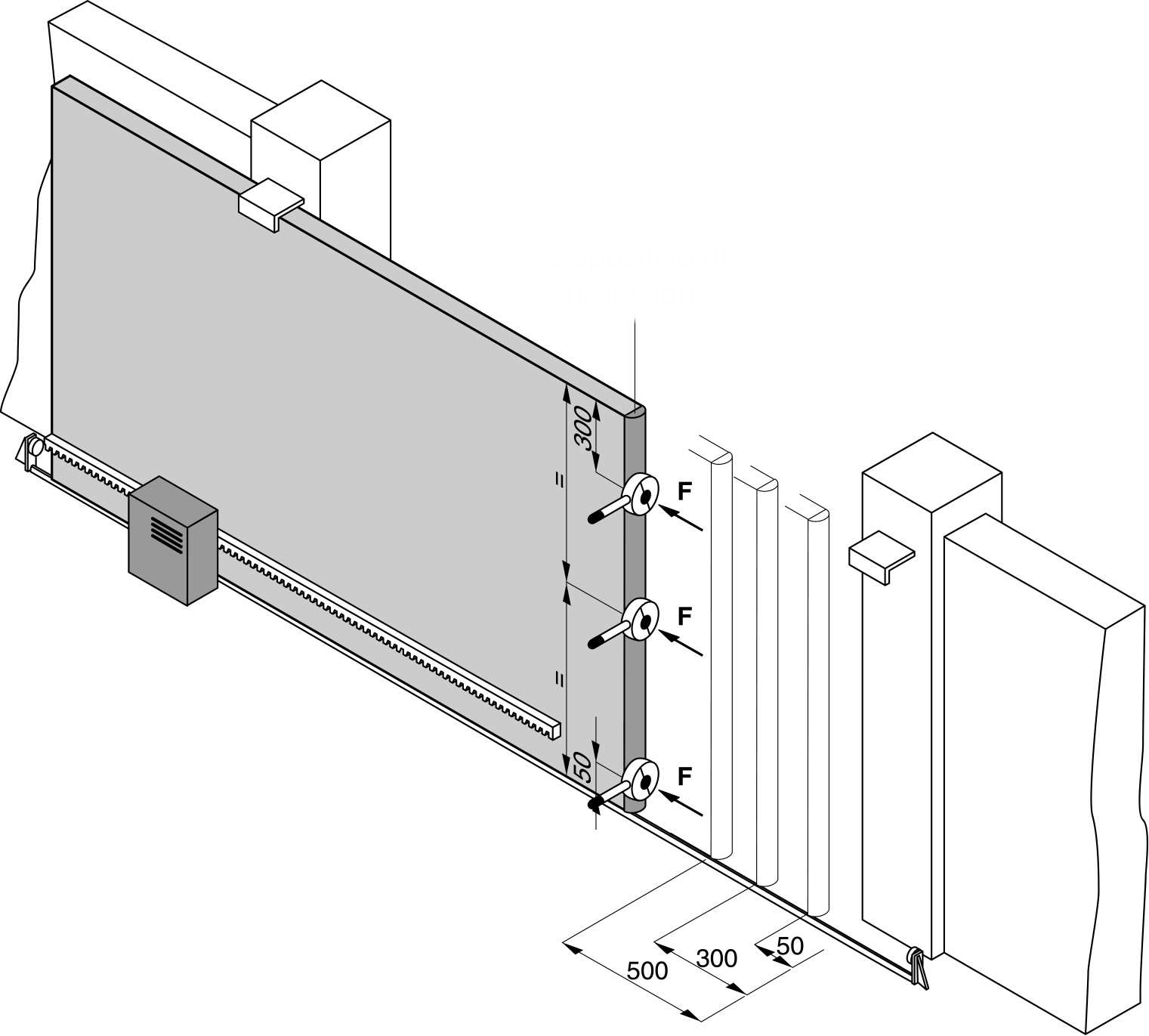
Defines force testing requirement points on sliding and swing gates.
Test points are horizontally 500mm, 300mm, 50mm from stop post (See above diagram).
Vertically 300mmm from top of gate, 50mm from bottom & halfway between these points
Each test point is measured 3 times
The average value is then calculated from these results and submitted as a PASS or FAIL
An EN12445 compliant force testing device must be used
As part of any ongoing maintenance contracts, a gate should be force tested annually, or when any changes to the safety devices are made (e.g. altering torque settings in control panel or replacing a drive unit).
-
EN12978
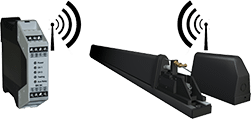
Defines required safety category for the electronic transmission system used to connect the safety devices to the automation control board.
Stipulates the transmission system must employ monitoring against faults in the attached safety devices and use force guided relays to signify a fault.
Stipulates that the system must be fail safe and ideally CATEGORY 3.
-
EN1760-2
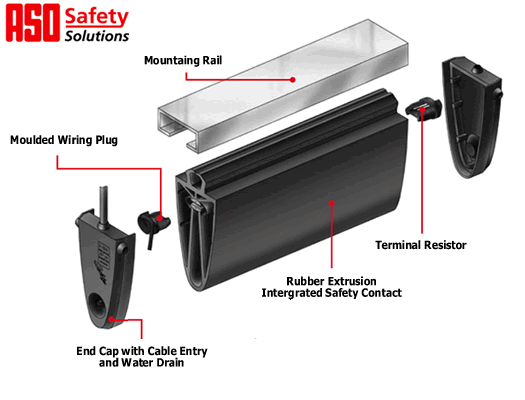
Safety Edges
Defines level of sensitivity, performance characteristics, response time and percentage of sensitive surface area of safety edges used
Tests on the edge are carried out by a notified body
Helps the installer select the appropriate size of profile for his gate, ensuring enough over travel distance to meet force tests
Certificates for the safety edge devices used must be made available upon request
-
EN12604
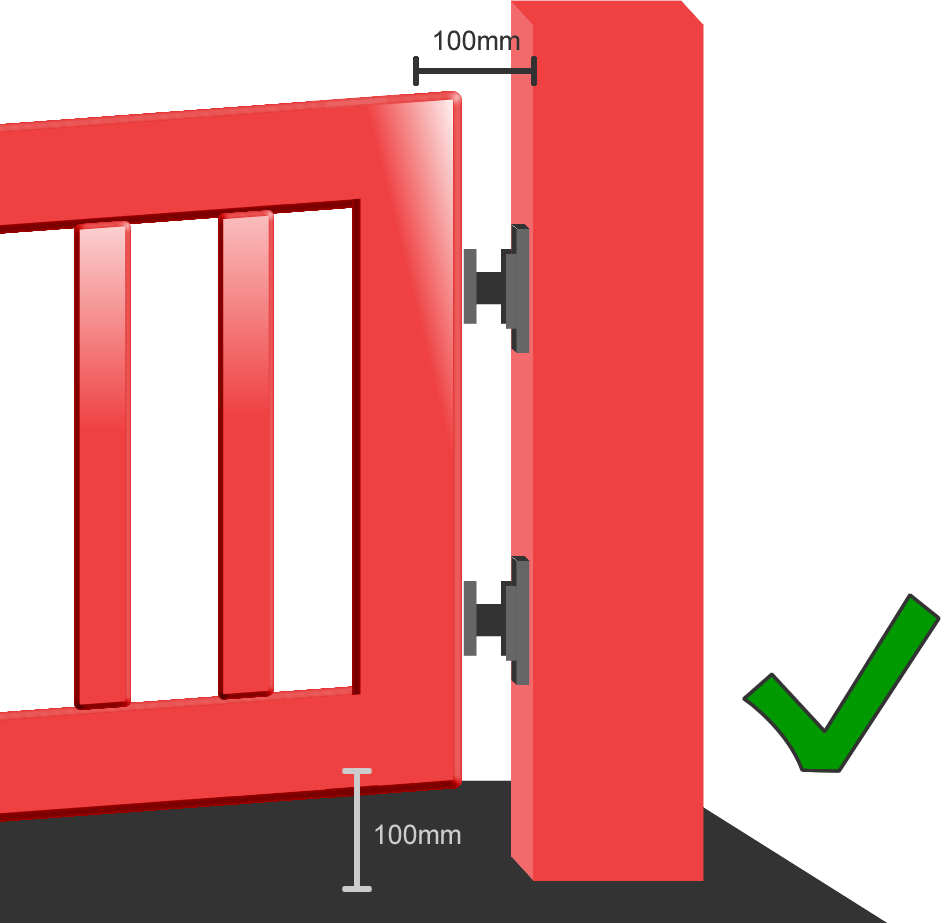
Defines mechanical aspects and assembly of the physical gate itself, including hinge assemblies and construction stability.
Design should eliminate gaps over 100mm in the following areas:
Hinge posts being the gap measured between the gate post and gate frame, this should not reduce down when the gate operates
Centre meeting points (swing gates)
Gaps underneath sliding gates that vary
Gaps above and below swing gates must also comply with the 100mm rule. To protect gaps that exceed this measurement the use of torque limitation, pressure sensitive edges or other "state of the art" techniques may be used.
-
EN12605
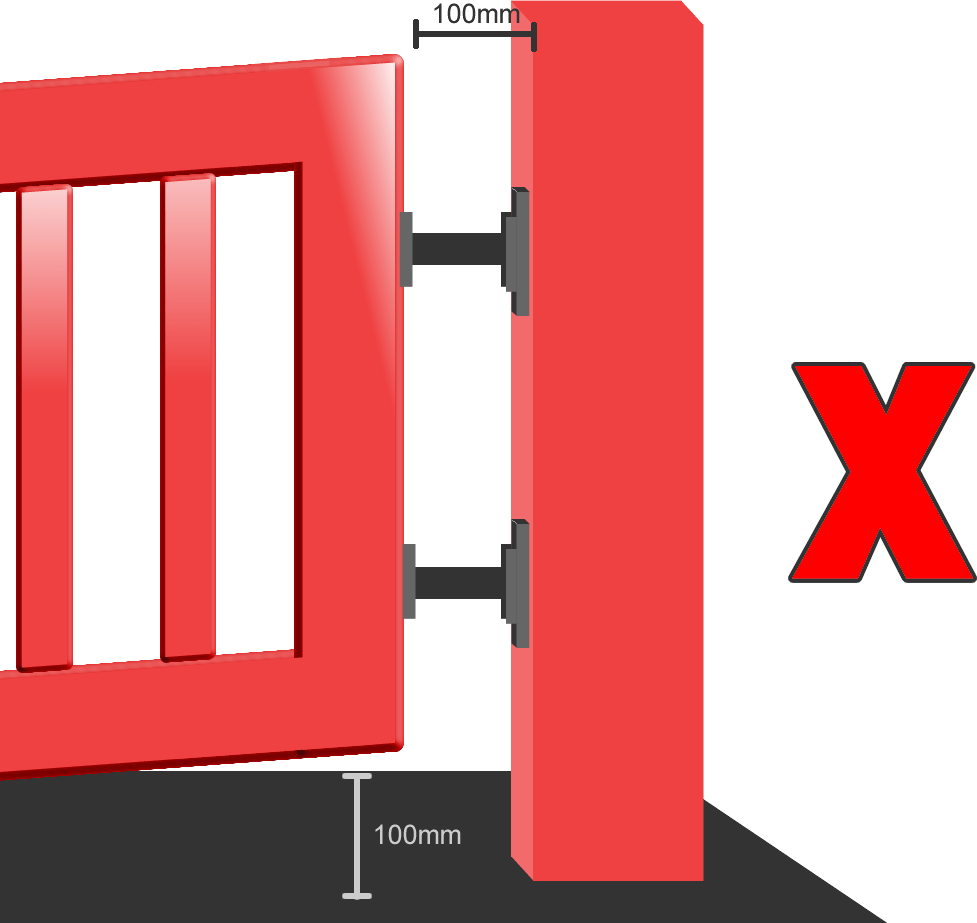
Defines mechanical aspects and assembly.
Including hinge assemblies and construction stability
Design should eliminate gaps over 100mm in the following areas:
Hinge posts being the gap measured between the gate post and gate frame, this should not reduce down when the gate operates
Centre meeting points (swing gates)
Gaps underneath sliding gates that vary
Gaps above and below swing gates must also comply with the 100mm rule. To protect gaps that exceed this measurement the use of torque limitation, pressure sensitive edges or other "state of the art" techniques may be used.
